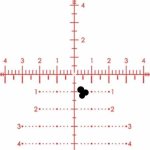Yeah. 1 click = .25 MOA, but AT WHAT DISTANCE!Again. You’re just making stuff up. My spotter (in tmr) is probably nicer than your whole rifle……
View attachment 8473749
Edit to add that this post is a joke.
Last edited:

Follow along with the video below to see how to install our site as a web app on your home screen.
Note: This feature may not be available in some browsers.
Yeah. 1 click = .25 MOA, but AT WHAT DISTANCE!Again. You’re just making stuff up. My spotter (in tmr) is probably nicer than your whole rifle……
View attachment 8473749
Yeah. 1 click = .25 MOA, but AT WHAT DISTANCE!
Really?You do realize that exact statement is true for mil?
Really?
So to know how many Milliradians I need to correct for then I need to know the distance?
The .36 part mystifies me… I’m mystified!They’re both angular. Both are tied to distance. One uses .25 one uses .36.
What about that mystifies you?
Shouldn’t you have similar rifles or be able to communicate in the same distance method? I’ve never heard anyone not say adjust 1 mil left or even just hold left edge I guess.Using your reticle vs your natural inclination as a human is moronic.
It assumes you have matching reticles and leaves you untrained to handle a situation without. Using linear allows shooter and spotter to ensure the correction is right adding redundancy.
I don’t think that’s what he’s saying, I do understand how even using MOA or MILs becomes irrelevant with matching turrets and a dope card. At some point it does just become dots and a ballistic calc telling you how many reticle notches to hold so from a practical point of view I get what they are saying. I didn’t intend to have people actually start discussing MOA/MILs just needed some advice on a weird scope thing..Really?
So to know how many Milliradians I need to correct for then I need to know the distance?
The .36 part mystifies me… I’m mystified!
Most mil scopes use .1
No the distance doesn’t change the measurement of 1 moa or 1 mil. They are measurements of angle.for both 1 moa and 1 mil the distance you are at changes the amount of distance that measurement is.
At 500 yards
1mil = 3.6inches x 5 = 18.0 inches
1moa = 1 inch x 5 = 5inches
Crazy. They both needed distance to measure.
No the distance doesn’t change the measurement of 1 moa or 1 mil. They are measurements of angle.
Angles know no distance! It’s an angle.
1 degree is 1 degree. Right?
I radian is 1 radian. Right?
Both are angles. Right?
Don’t mix linear and angular.
The reticle measurement gives you a measurement of ANGLE. Simple.
Haha! That first one was a joke, as this thread is full of the usual gooberish.You just argued against yourself and the point I’ve been making to you this whole time. Moa and mil are both angular. Both have distance components.
You tried to make it seem like moa was unique to mil in that respect. You now pointed out it’s not. Thanks.
View attachment 8473904
But then you said “ Angles know no distance! It’s an angle.”
This whole time I’ve pointing out you’re not even argueing anything. Do you need a hotline number or something? Are you okay?
Exactly. For the life of me, I don’t know why this is so hard to understand….No the distance doesn’t change the measurement of 1 moa or 1 mil. They are measurements of angle.
Angles know no distance! It’s an angle.
1 degree is 1 degree. Right?
I radian is 1 radian. Right?
Both are angles. Right?
Don’t mix linear and angular.
The reticle measurement gives you a measurement of ANGLE. Simple.
We all know '1" at 100 yards" is not 1 MOA. Who comes up with this shit? And who called that a MOA?
Or we could start teaching geometry in skool again.IQ tests should be apart of the account making process……
you were the only one here not understanding and argueing against yourself?Or we could start teaching geometry in skool again.
It’s dry fire week…This thread is either early for 2025 or late for 2024. We do not discuss MILOA unless it is February.
Or you use the target.You do it the same way. You use the reticle like a ruler and hold or dial a correction. It's the same as mils but a different number.
You can always 3.43 that stuff as well. If you have timeOr you the target.
If my spotter is spotting with a MIL reticle and I am shooting a MOA scope (or vice versa or whatever) you simply call shot according to target size.
"Miss, left half a target"
There are 4 MIL standards.If you're trying to convert inches to mill you're doing it wrong.
It gets better, there's 2 different moa standards....
Or you use the target.
If my spotter is spotting with a MIL reticle and I am shooting a MOA scope (or vice versa or whatever) you simply call shot according to target size.
"Miss, left half a target"
EXACTLY...it's simple, you look at that target with your ruler and you hold or dial accordingly. Now, if you and your spotter are both using the same scale, then I can see being a little peeved that they aren't calling the measurement but using the target as the scale is universal.I don’t and was using that as an example I would treat someone calling left 1/2 target the exact same way. Does me absolutely no good, I still have to process target size to mils to adjust the scope unless I do hold overs
Or you use the target.
If my spotter is spotting with a MIL reticle and I am shooting a MOA scope (or vice versa or whatever) you simply call shot according to target size.
"Miss, left half a target"
Can just use .35 moa per .1 mil also. Pretty fast in the head when practiced. Missed a mil left then correct 3.5 moa right. I have done it a bunch spotting for moa guys. Target thing works ok if close enough and not needing wind and elevation adjustments.
Sure...but then you, the spotter, is doing mental math and the shooter has to have confidence in your mental gymnastics. If you call the target, the onus is on the shooter.Can just use .35 moa per .1 mil also. Pretty fast in the head when practiced. Missed a mil left then correct 3.5 moa right. I have done it a bunch spotting for moa guys. Target thing works ok if close enough and not needing wind and elevation adjustments.
Or you use simple math because moa doesn’t need a .36 multiple
That really came full circle

No you are trying to use some linear. I am keeping is angular. That .36 is only at 100 yards. You aren’t as smart as you think you are and it shows.
But it’s not hard to do and the target is actually harder if he is not just off the edge of it. If he is a good deal off the mil to moa is much easier and faster. If you were doing it a lot having a cheat sheet is even easier but if you do it the mental math is not hard at all as you learn what it is. Also luckily we don’t have to do it much anymore.Sure...but then you, the spotter, is doing mental math and the shooter has to have confidence in your mental gymnastics. If you call the target, the onus is on the shooter.
I'd say calling the impact is allowing for that current wind and elevation.
Let's say a call was "5:30, 2 targets"
How would you adjust your next shot? Windage AND elevation?
Targets off is linear. You just agreed it was acceptable - okay thanks. However you can’t do math well enough to use it at distance - thanks for admitting.
If you used moa you’d realize it’s an easier system because (as you noted) you have to include distance in angular measurements.
You keep trying to blatantly misinterpret what I’m saying and call me dumb. It’s really funny
It’s the smart guy using linear as 1 mil is 3.6” at 100 yards so .36 is a tenth of a mil.By the way...
1 MOA = 0.290888 MIL
1 MIL= 3.4377492368197 MOA
Where are you guys coming up with 0.36 as a multiple or factor?
No you are that dumb. Been doing this over thirty years and have used moa/mil, moa/moa and mil/mil scopes and know how to use them all and never use a linear with any of them. You obviously think the .35 is some linear. It’s not. But you keep thinking you’re smart. Lol
It’s the smart guy using linear as 1 mil is 3.6” at 100 yards so .36 is a tenth of a mil.

Do some reading.

Long Range Shooting - MOA and MILS explained
A MIL or an MOA linear equivalent increases proportionally with distance. With the MOA and MIL systems, you correct the position of the reticle inside the scope, based on wind deflection and trajectory of the bullet at the target’s distance.www.longrangeshooting.org
I don’t need to read it. I live it. Lol
Skoash. One skoash is equal to 1 phlibit at 113 yards. There is no known formula to convert to inches.My scope reticle is marked in phlibits. On this target, I just dialed 1.0 phlibit up and .5 phlibit left and the next shot was dead center.
I can't find the conversion of phlibits to inches, but, to be honest, it seems fucking stupid to convert angular to linear anyway when the scope tells me exactly what to dial....
View attachment 8473956
Unless you are a red headed femaleSkoash. One skoash is equal to 1 phlibit at 113 yards. There is no known formula to convert to inches.

Lol I’m not wrong. I am sure that write up has all sorts of linear to angular as most do to confuse new shooters more and it says 1 mil is 3.6” at 100 somewhere. Even you can do the math where you got the .36 in your original posts from.Then why are you so blatantly wrong? And incapable at simple ballistic math?
Well....Skoash. One skoash is equal to 1 phlibit at 113 yards. There is no known formula to convert to inches.

Dang, you're right! I remember my dad using "skoash" as a unit of measurement when I was a kid back in the '50s and 60s! But he was working in the confines of his woodworking shop and I guess the pieces were too small to use phlibits...Skoash. One skoash is equal to 1 phlibit at 113 yards. There is no known formula to convert to inches.






The first one is the one I can relate to. Sad. LolMan, so many Brooklyn 99 gifs captured my reactions as I read through this shitshow





@Rob01
Explain this. At 700 yards it calls for 4mil drop with 101 inches.
7 x 3.6 = 25.2 / mil x 4mil = 100.8 inches
View attachment 8473991
If you need me to explain that to you then you are making me sadder as you aren’t making the point you think you are.
Ok I am going to bed. You keep posting your linear messes. Lol
Just pm me for invoice. Your dept can send a check for the training since you don’t know a damn thing about shooting after an alleged 30 years.

